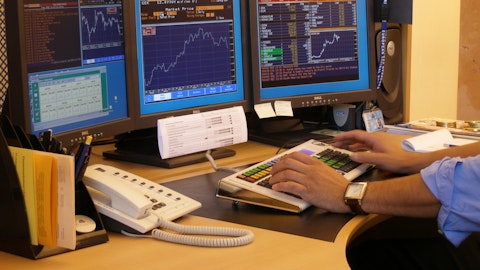New York-based Willow Oak Asset Management, LLC, a subsidiary of Enterprise Diversified, Inc., released its Q2 2019 Shareholders Letter – a copy of which can be downloaded below.
Willow Oak Asset Management, LLC’s funds are independently run by fund managers who use a value-oriented investing framework. These professionals actively look for unique opportunities and are committed to long-term investing. Led by Steven Kiel, the team offers administration, networking, marketing, and infrastructure services to help their clients gain high returns.
As Willow Oak’s President, Steven Keil sets strategic priorities for the firm. His previous experience includes being an attorney in private practice. An Operation Iraqi Freedom veteran, Keil serves as a judge advocate in the Army Reserves and currently holds the Major rank. Keil holds other positions such as Executive Chairman of Enterprise Diversified, Inc., President of Arquitos Capital Management, and Portfolio Manager of Arquitos Capital Partners. He is an alumnus of the George Mason School of Law and Illinois State University.
In Willow Oak’s most recent letter to shareholders, Keil made a special announcement for the upcoming Willow Oak Investor Day that will be held on September 17, 2019 in New York City. The event will be attended by investors as well as guests from the firm’s affiliate funds such as Alluvial Fund, Arquitos Capital, and Bonhoeffer Fund. The firm Q2 activities were also discussed in the letter, including the panel discussion Willow Oak hosted at the Berkshire Hathaway Annual Meeting in May.
In the letter, Keil disclosed that the firm generates revenue from 3 main sources: Alluvial Fund returns (biggest driver), fee shares, and fixed revenue from its fund management services. AUM reportedly increased by 89% and the revenue from the other 2 sources increased by 352%. It was also mentioned that the number of investors in the firm’s affiliated funds increased by 182%.
“Willow Oak primarily generates revenue from three sources: returns from our seed investment in Alluvial Fund, fee shares, and fixed revenue from our Fund Management Services (FMS).
The biggest driver each quarter is our investment in Alluvial Fund. GAAP requires us to treat the gains from Alluvial (both realized and unrealized) as revenue. As Alluvial makes a positive return, we earn positive revenue, of course. The confusing part of this financial reporting comes when Alluvial is down for the quarter. We are required to treat a decline like that as negative revenue.
Alluvial will have quarters that will significantly skew the financial results for Willow Oak, so I ask that you keep the above in mind when analyzing our results. Our investment in Alluvial is intended to be permanent, so these quarter-over-quarter and year-over-year results are not helpful in analyzing Willow Oak as a whole.
The next part of our revenue comes from our fee share agreements. This includes both management fee shares—which can be mostly predictable—and performance fee shares. These fees are reported each quarter. This makes sense for the management fee share. It makes less sense for the performance fee shares. For each of the funds, performance fees are accrued on a monthly basis but do not crystalize until the end of the calendar year. Like with the Alluvial performance, Willow Oak on occasion will report negative revenue from its performance fee share when one or more of the funds have a quarter of negative performance.
The most predictable revenue is the fixed fees generated from FMS. This currently only applies to the relationship with Arquitos Capital, where Arquitos pays a fixed monthly fee and a performance fee share.
We are confident that the funds will do well over time, and we will generate positive “revenue” from the performance of our seed investment in Alluvial, as well as the performance fee shares. These results will be unpredictable, though, and could cause Willow Oak’s reported results to be unusually good or unusually bad despite there being no change in our long-term view.
Because of the unpredictability of the items above, we feel that the more important items to track yearover-year are the collective revenue from FMS and the management fee share, the number of investors in all of the funds, and the Assets Under Management (AUM) of all of the Willow Oak-affiliated funds.
We are starting from a small base but have a long runway. We are happy to report the following results when compared to a year ago:
- AUM increased by 89%
- Revenue from FMS and the management fee share increased by 352%
- The number of investors in Willow Oak-affiliated funds increased by 182%
Willow Oak earned a non-material amount in performance fee shares in the second quarter.”
You can download a copy of Willow Oak Asset Management’s Q2 2019 Investor Letter here:
Willow Oak Asset Management’s Q2 2019 Investor Letter
You can also see the list of our 2019 Q2 investor letters and download them on this page.





